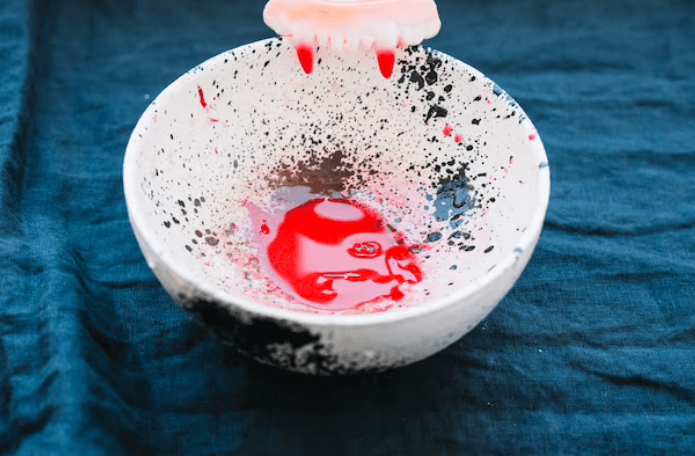Mastering Wax Molds: An In-Depth Guide to Applications and Techniques
4 Mins Read
Published on: 24 March 2023
Last Updated on: 16 September 2024

toc impalement
Wax molds are crucial in various industries, including jewelry, dentistry, and manufacturing. They serve as models for creating diverse products such as jewelry pieces, metal castings, and dental restorations. This comprehensive guide will explore the ins and outs of wax molds, covering their manufacturing process, benefits, and applications.
Understanding Wax Molds
A wax mold is a wax replica of an object that serves as a model for producing a wide range of products, such as jewelry, metal castings, and dental restorations. Wax molds are typically fabricated through a process called wax injection molding, where molten wax is injected into a mold cavity.
Benefits of Wax Molds
Wax molds offer several advantages over other materials:
- Easy to work with: Wax is a relatively soft material, making it simple to carve and shape.
- High level of detail: Wax molds can precisely capture intricate designs.
- Versatile: Wax molds can produce various products, including jewelry, metal castings, and dental restorations.
- Cost-effective: Wax is an affordable material, making it an economical choice for mold creation.
The Wax Molding Process
Wax molds are generally created using wax injection molding, a process that consists of the following steps:
- Creating a mold: A mold is crafted from materials such as silicone rubber or metal, designed to match the exact shape and size of the desired object.
- Preparing the wax: Wax is melted in a wax pot until it reaches a liquid state.
- Injecting the wax: The liquid wax is injected into the mold cavity using a wax injection machine, with high pressure ensuring the mold cavity is completely filled.
- Cooling the wax: After injecting it into the mold cavity, it can cool and solidify.
- Removing the wax: The solidified wax is removed from the mold cavity, replicating the original object the mold was designed to create.
Wax Mold Applications
Wax molds are employed in various industries for a wide range of purposes, including:
- Jewelry making: In the jewelry industry, wax molds are used to create wax models of jewelry designs, which are then utilized to produce metal castings of the final product.
- Dental restorations: In dentistry, wax molds are employed to create wax models of dental restorations, such as crowns and bridges. These wax models help create custom-fitted ceramic or metal restorations for patients.
- Manufacturing: Wax molds are used in manufacturing to create product prototypes before mass production. This enables manufacturers to test and refine designs before investing in expensive tooling.
- Sculpture: In sculpture, wax molds are used to create replicas of sculptures for display purposes or as a reference for future works.
Working with Wax Molds: Tips and Tricks
To achieve the best results when working with wax molds, consider the following expert tips and techniques:
- Maintain a clean workspace: As a soft material, wax can easily accumulate dirt and debris. Ensuring your workspace is clean and clutter-free before starting will help prevent contamination and promote better results.
- Be patient and gentle: Wax requires a delicate touch, so take your time when carving, shaping, or manipulating the material to avoid causing damage or unintended deformations.
- Use the appropriate tools: Utilizing tools specifically designed for wax molds will make working with the material easier and more precise. Examples of specialized wax tools include wax carvers, spatulas, dental picks, and wax pens. Additionally, using a wax file or sandpaper can help achieve a smooth finish on your wax mold.
- Keep wax at a consistent temperature: Since wax is sensitive to temperature fluctuations, maintaining a consistent temperature is crucial. Use a wax pot or another heating device to keep the wax at an ideal working temperature. Additionally, consider using gloves or finger cots when handling the wax, as body heat can cause unwanted melting or deformation.
- Practice safety precautions: Wax can be flammable, so exercise caution when working with it. Keep a fire extinguisher nearby, avoid working near open flames, and make sure your workspace is well-ventilated to prevent the buildup of fumes.
- Plan and sketch your design: Before starting your wax mold, plan and sketch your design to ensure a clear final product vision. This can help you identify any potential challenges or adjustments that may be needed during the molding process.
- Work in stages: Break down your project into manageable stages, and focus on completing one step at a time. This can help you maintain high precision and reduce the risk of making mistakes.
- Test different wax types: Experiment with different types of wax to find the one that best suits your specific project requirements. Different waxes have varying hardness levels, flexibility, and melting points, which can impact the final result.
- Learn from mistakes: As with any art or craft, practice makes perfect. If you encounter challenges or make mistakes, use these experiences as opportunities to learn and improve your skills.
- Seek expert advice: If you are new to working with wax molds or encounter challenges, seek advice from experienced professionals in your field. This can provide valuable insights and guidance to help you refine your techniques and achieve better results. Joining online forums, attending workshops, or participating in local classes can also offer opportunities to learn from others and expand your knowledge.
Conclusion
Wax molds are indispensable tools in industries such as jewelry making, dentistry, and manufacturing. They are user-friendly, versatile, and cost-effective, making them an ideal choice for various applications.
Wax molds are produced using wax injection molding, which involves injecting molten wax into a mold cavity. They can be employed to create a diverse array of products, including jewelry, dental restorations, and manufacturing prototypes.
Remember to maintain a clean workspace, be patient, use the right tools, keep the wax at a consistent temperature, and adhere to safety precautions when working with wax molds.
Additional:


















Comments Are Closed For This Article